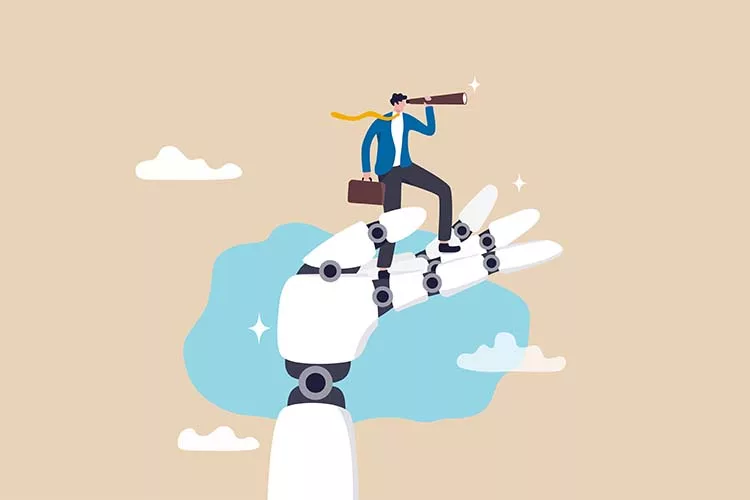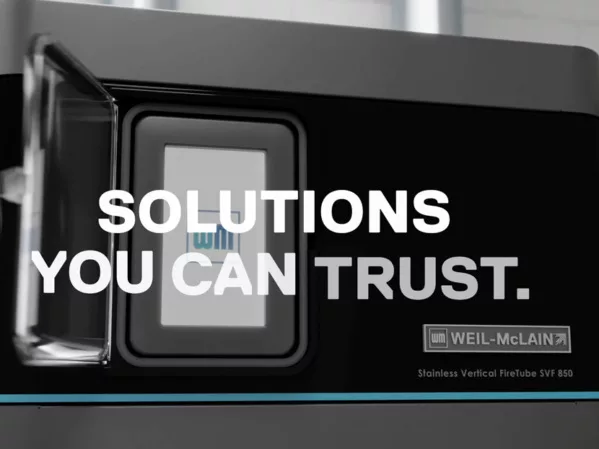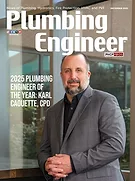Integrating artificial intelligence (AI) into the plumbing industry is no longer a futuristic concept — it’s happening right now.
At the 2025 AHR Expo in Orlando, Florida, I had the privilege of participating in a panel discussion alongside industry experts Mary-Anne Boycott and Susan Frew. Our discussion on stage and during preparation revolved around AI’s role in enhancing efficiency, automating tasks, overcoming adoption challenges and reshaping the skilled trades workforce.
I want to share some of the key takeaways from the session, outlining where AI is headed and what professionals need to know to stay ahead of the curve.
The growing role in the skilled trades
AI is becoming deeply embedded in the construction industry, providing real-time solutions, predictive insights and automation capabilities that streamline operations. Contractors have access to AI-driven tools that can diagnose issues on-site, provide instant feedback on asset inventory and repair cadences and are truly starting to optimize a company’s workflow.
The key is understanding how to integrate these tools effectively without disrupting existing processes and “keeping things simple.”
One of the major points discussed was how AI-powered tools transform work in the field. Through easy-to-find solutions such as Meta glasses, contractors can record jobsite walkthroughs or help diagnose a problem with a remote technician using this second set of eyes and ears.
I shared my experience with Meta glasses, demonstrating how they can potentially assist with jobsite documentation, estimating and tracking tools and equipment by location-based prompting. Long gone are the days of texting photos when you can easily jump right into the on-site technician’s eyes.
Automation saves money
Automation powered by AI has become a game changer for businesses looking to cut down on repetitive tasks. AI-driven estimating tools and decentralized, company-specific, generative pre-trained transformers can quickly analyze prints, determine material specifications and streamline project management.
Susan shared a real world example of how AI helped a manufacturing client save $300,000 annually by optimizing logistics and scheduling, eliminating costly late delivery fines. When it comes to manufacturers and warehouse work, AI is optimizing logistics, reducing bottlenecks and minimizing delays with ease.
Despite its advantages, adopting AI isn’t without hurdles. Business owners like Mary-Anne often struggle with where to start, and Susan made a great point that you have to “go old school before you go new school.” Mapping out existing workflows and standard operating procedures before integrating AI helps prevent frustration and ensures solutions actually solve problems specific to your business.
Without a clear understanding of your outfit’s processes, AI integration will most times lead to inefficiencies and additional work, instead of the mentioned improvements. The key is to start with organization, finding your most important categorical or numerical data and keeping it in a spreadsheet. Optimization comes once your processes have been reviewed by an AI tool and prompted to assist with specific pain points and goals.
Once all those recommendations come through, the ability to scale your business becomes a walk in the park.
A major strength of AI is its ability to leverage historical data for predictive analytics. I emphasized that businesses already possess valuable data in their day-to-day processes; they only need to organize it and make it digital. AI can quickly identify inefficiencies, predict equipment failures and provide insights that drive smarter decision-making and tailor customer-specific needs.
In the service industry, this is particularly beneficial for fleet management, where tools such as GPS can monitor vehicle performance, optimize schedules and reduce costs by making informed decisions.
Quality control and good service
AI has quietly integrated itself into many home and building systems, some improving water management, some monitoring for leaks and others making smart decisions related to climate control. This means plumbers and mechanical technicians need to learn about these products yesterday. Homeowners may not always realize that AI is behind some of these machine learning processes, but the benefits are tangible and quite intuitive.
On a broader scale, AI-enhanced quality control systems ensure that customers get what they need before an emergency can occur. If you can predict your customers’ failures and schedule maintenance at an agreed-upon frequency based on analytics, your service will be second to none. Although, the ability to streamline operations translates to significant cost savings, even without AI — so organization is simply the key to success.
From reducing downtime with automated predictive maintenance reporting to improving energy efficiency in operations, AI is sure to become a valuable talent that contractors will be excited to promote and advertise.
Despite advancements in automation, the panel unanimously agreed that human interaction remains essential, especially in the home service industry. AI may streamline tasks, but customer-facing roles will always require a personal human element. Its features can absolutely assist in training, knowledge sharing and efficiency improvements, but the human connection remains irreplaceable.
I noted that AI can reduce stress by eliminating tedious administrative tasks, potentially leading to a more positive work environment and better home service industry experiences.
As AI adoption grows, so does the conversation around regulation and privacy matters. There is a need for policies to ensure ethical use, data privacy and security of our employees and customers. The panel conversation touched on the recent push for AI oversight, the need for consent and talked about some new regulations being explored at both industry and government levels, which has some folks concerned about who is at the helm.
A common fear about AI is its effect on the job market and the need to retool. While AI is automating many tasks, it also creates many new opportunities for future generations. We all agreed that AI is not about replacing human workers but rather about evolving roles within the industry, making it safer and more effective to increase building. Those who embrace AI and learn to work alongside it will thrive, while those who resist may struggle to keep up.
The future of AI in the trades
One of AI’s biggest challenges is its energy consumption. Data centers require substantial energy to operate, leading to discussions about improving energy efficiency and exploring alternative power sources, such as liquid-cooled solutions, which create more work for plumbers and technicians. The discussion went further into detail about conceptual and innovative ideas, improving data storage locally and how to reduce energy loss.
Looking ahead, AI and robotics will continue enhancing the construction industry, but they won’t eliminate the need for skilled craft workers. Instead, AI will become a powerful assistant, helping professionals make more informed decisions, improve efficiency and elevate service quality. Tools such as Meta glasses, AI-driven construction management software and automated fleet management solutions will become standard in construction.
Meanwhile, exoskeletons and robotic systems will emerge as useful ways to help reduce physical strain, making the trades more accessible to a wider workforce and saving our bodies.
The AHR Expo panel reinforced that AI is no longer an emerging technology; it’s here and reshaping our future. The construction industry must embrace this shift, balancing technological innovation with workforce adaptation and ethical considerations. As this technology continues to evolve, those who stay informed, adaptable and proactive will lead the way in defining its role in our industry.
For professionals looking to navigate this AI landscape, the key is to remain open to learning, invest in the right tools and develop strategies to maximize its benefits while maintaining the irreplaceable human expertise that keeps our craft alive and well.






